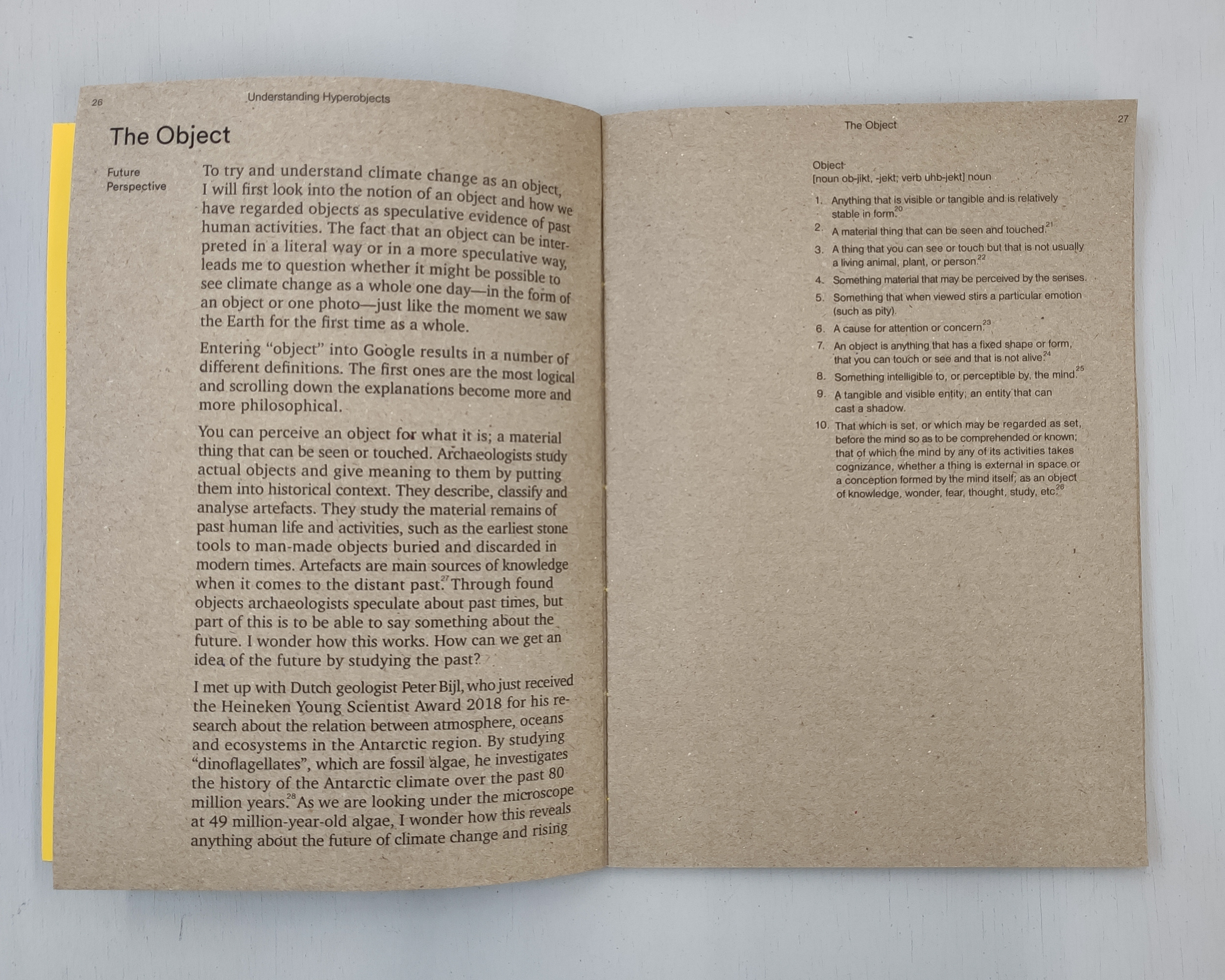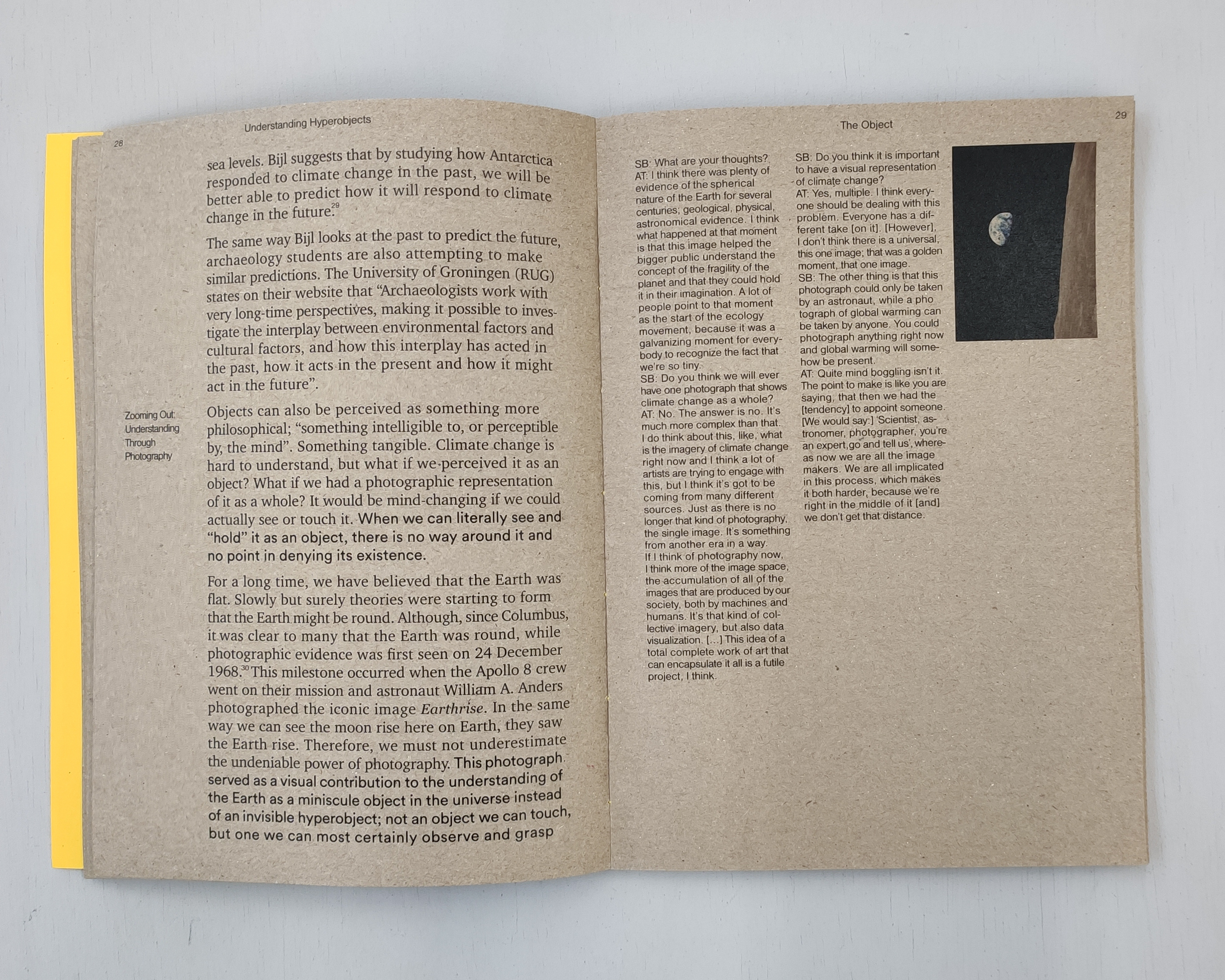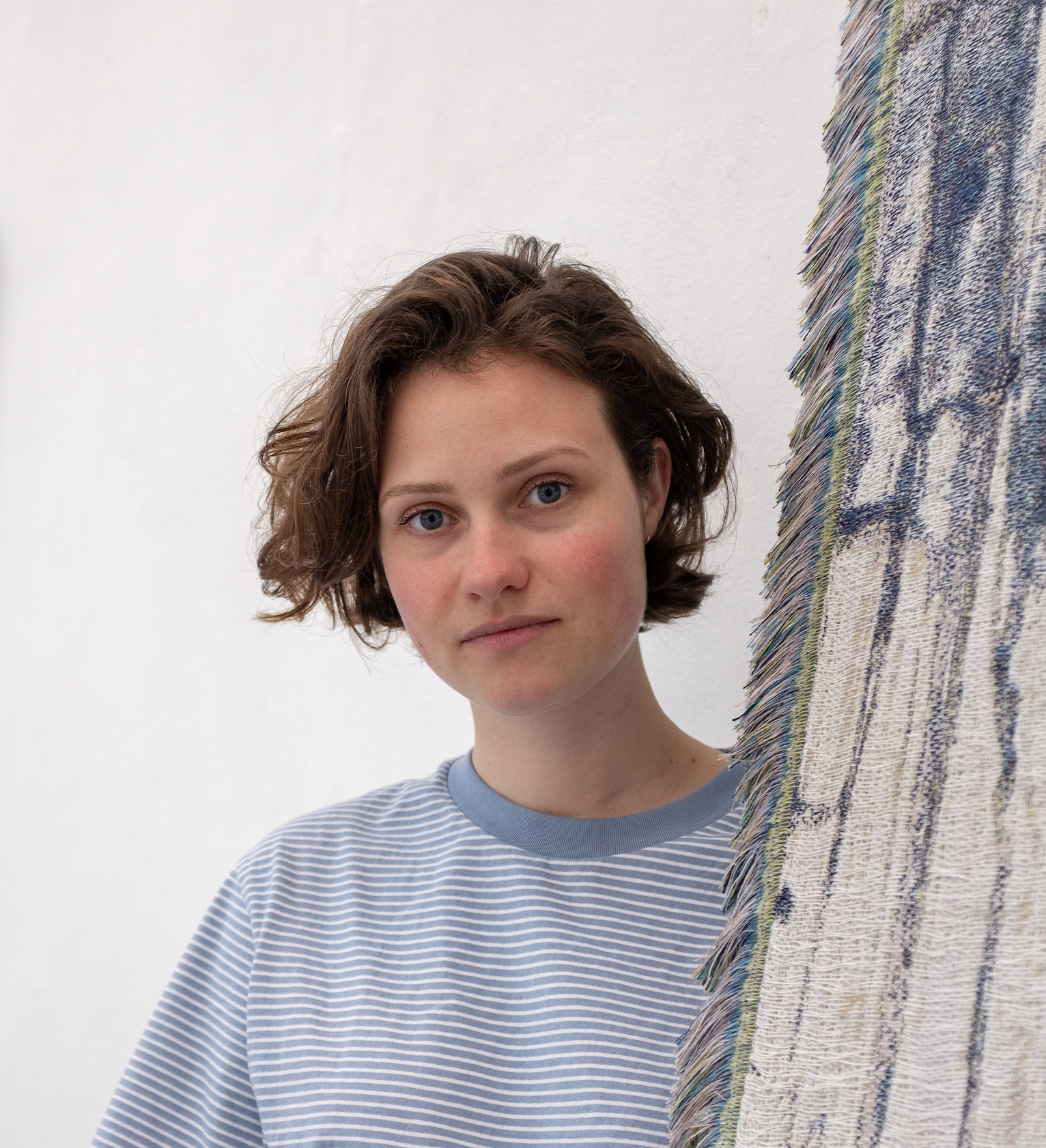Works - Exhibitions - Workshops / Talks - Read / Hear - Shop - About - Bio / CV
Understanding Hyperobjects:
An Archaeological Quest Into The Anthropocene
Bachelor’s Thesis, Royal Academy of Art, The Hague.
This thesis served as inititial research for my graduation project Climate Archive.
In a time of man-made climate change and global pollution, it is hard to feel a personal connection to and understand our individual responsibility for phenomena that happen on a global scale. In Understanding Hyperobjects: An Archaeological Quest Into the Anthropocene, the question is raised whether objects can help us to gain an improved understanding of man-made climate change and global pollution in the Anthropocene; the age in which humankind irreversibly changed the Earth’s biosphere. The way archaeologists give meaning to found objects is opposed to Timothy Morton’s philosophy of perceiving man-made climate change as a hyperobject; such an immense object that we cannot see or touch it, but only experience the effects of it. In order to understand our impact on Earth, this thesis leans more towards looking at actual objects that humankind leaves behind. What will future archaeologists find from today’s civilization? For this, discussions emerge about artists Kelly Jazvac, Giuseppe Licari and Nishiko, who use the approach of archaeology in their projects. Throughout the thesis there will be a dialogue with design curator Alice Twemlow, who dealt with topics such as hyperobjects, archaeology and sustainability in her course, Future Fossils, A Design Archaeology of the Here and Now, at the KABK.












This publication can be bought in the shop. Click here.
